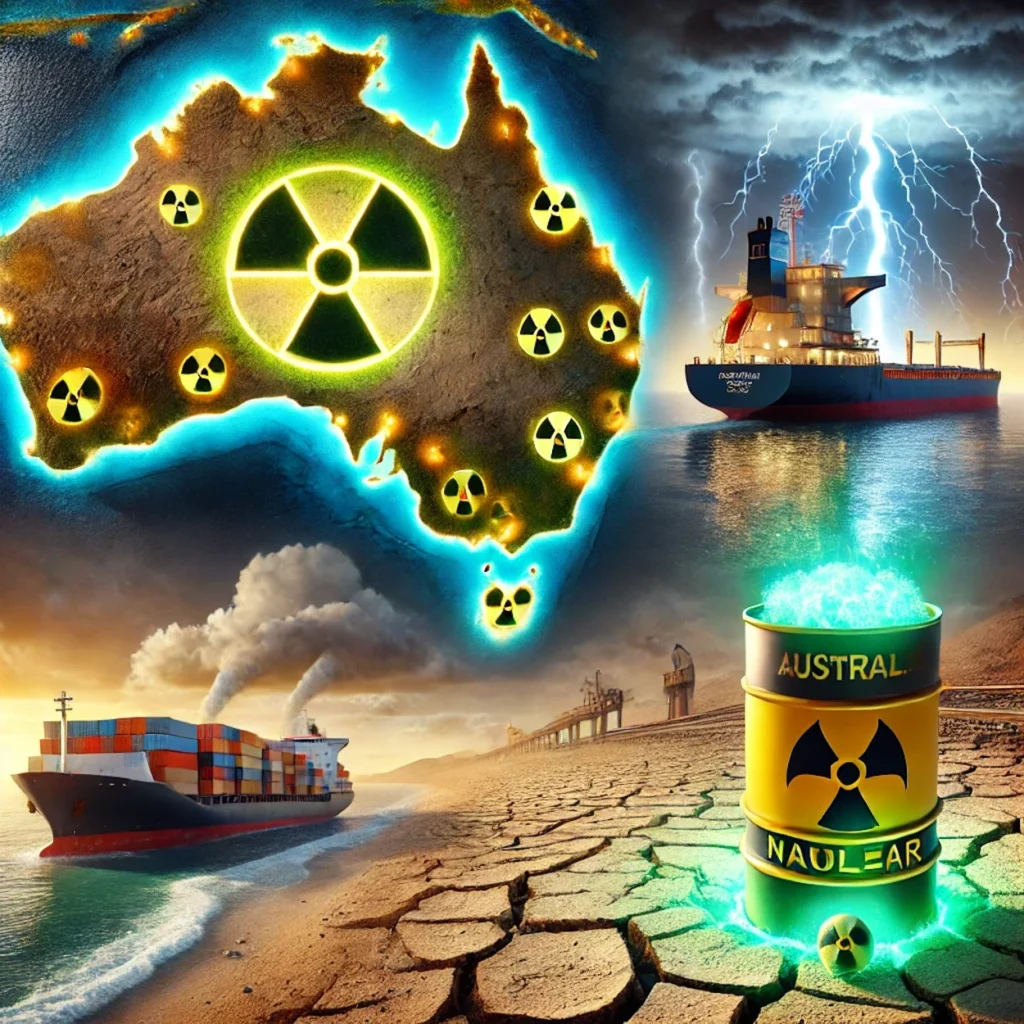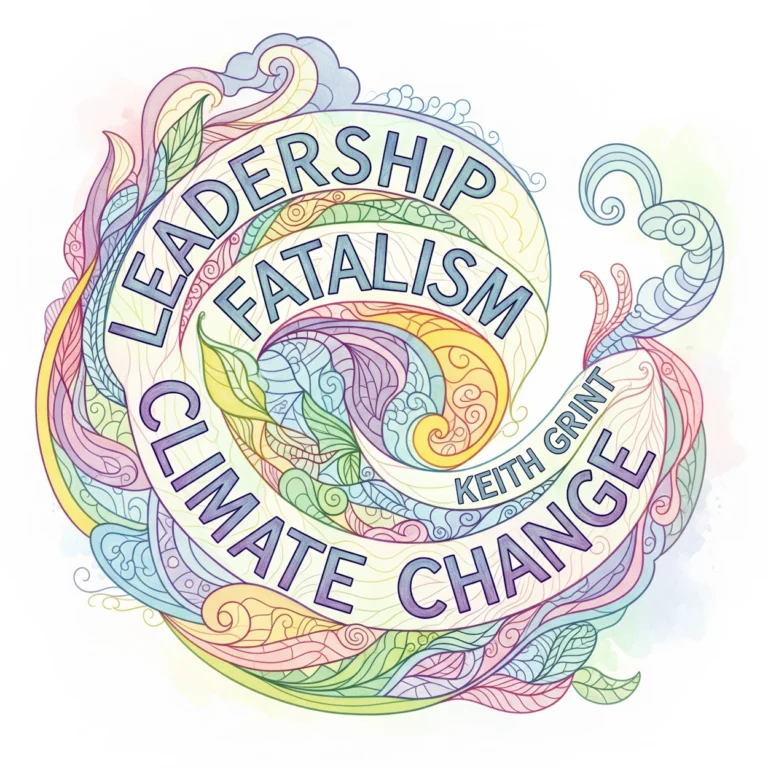This paper critically examines the viability of storing nuclear waste in Australia, exploring environmental, social, and economic dimensions. While Australia possesses stable geological sites and low population density, significant concerns arise regarding environmental safety, Indigenous land rights, public health risks, and economic implications. Drawing from international case studies and domestic challenges, this paper argues that the risks and socio-political challenges outweigh potential benefits, making nuclear waste storage in Australia a contentious and impractical solution.
1. Introduction – Storing Nuclear Waste in Australia
Nuclear waste storage is a global challenge, with countries seeking long-term solutions to manage high-level radioactive waste (HLW). Australia has been considered an ideal candidate due to its geological stability and low population density (World Nuclear Association, 2023). However, the proposal has faced strong resistance from Indigenous communities, environmentalists, and segments of the public. This paper evaluates the feasibility of nuclear waste storage in Australia, with a critical focus on environmental risks, social opposition, and economic sustainability.
2. Background and Context
Australia does not generate nuclear power but produces low- and intermediate-level radioactive waste through medical and industrial applications (Australian Radiation Protection and Nuclear Safety Agency, 2021). However, international pressure to accept foreign HLW has increased due to Australia’s vast deserts and perceived political stability. Notably, the proposed sites in South Australia, including Kimba, have sparked heated debates (Barngarla Determination Aboriginal Corporation, 2022).
Despite theoretical benefits such as economic incentives and contributions to global waste solutions, the challenges associated with permanent storage remain significant.
3. Environmental Risks – Storing Nuclear Waste in Australia
3.1 Groundwater Contamination
Long-term containment of nuclear waste is not foolproof. International examples, such as the Asse II mine in Germany, demonstrate that even carefully planned facilities can experience leakage, leading to groundwater contamination (Federal Office for the Safety of Nuclear Waste Management, 2021). Similar risks exist in Australia’s arid regions, where aquifers are critical to agriculture and ecosystems.
3.2 Geological Stability
While Australia is geologically stable, minor seismic activity has been recorded. For example, earthquakes near Uluru in 2016 (magnitude 6.1) highlight potential vulnerabilities (Geoscience Australia, 2020). Even low-probability seismic events could compromise waste containment over millennia.
3.3 Climate Change Impacts
The long-term effects of climate change, including rising temperatures and increased extreme weather events, introduce uncertainties about the integrity of storage facilities, particularly in remote areas prone to flooding or desertification (IPCC, 2022).
4. Indigenous Land Rights
Many proposed sites for nuclear waste storage are located on or near Indigenous land, raising ethical and legal concerns. For example, the Barngarla people in South Australia opposed the Kimba proposal, citing lack of consultation and potential cultural heritage damage (Barngarla Determination Aboriginal Corporation, 2022).
Disputes over land use undermine Australia’s commitment to reconciliation and international human rights obligations, such as those outlined in the United Nations Declaration on the Rights of Indigenous Peoples (UNDRIP) (United Nations, 2007).
5. Public Health and Safety
5.1 Transportation Risks
Transporting nuclear waste to remote locations poses significant risks to public health and the environment. Most international nuclear waste would need to be transported to Australia via marine routes, which carry unique challenges:
- Marine Accidents: Shipping incidents such as the MSC Napoli (2007) have demonstrated the potential for catastrophic environmental damage if containers holding hazardous materials are lost at sea (Marine Accident Investigation Branch, 2008). The transportation of radioactive materials amplifies these risks due to the long-lasting nature of contamination.
- Piracy and Terrorism: Nuclear waste shipments could become targets for piracy or terrorism, especially in regions like the South China Sea, known for high piracy rates (Oceans Beyond Piracy, 2021). Such incidents could result in stolen materials or deliberate environmental sabotage.
- Port Infrastructure and Handling: Australian ports may lack the necessary infrastructure to safely offload and inspect radioactive materials. Past issues with port mishandling, such as the 2022 Fremantle container fire, highlight systemic vulnerabilities (Australian Maritime Safety Authority, 2022).
- Terrestrial Transport Risks: After marine transit, waste must be transported across thousands of kilometers of inland routes. Accidents involving road or rail transport of hazardous materials have historically resulted in significant environmental harm, such as the Lac-Mégantic rail disaster in Canada (Transportation Safety Board of Canada, 2014).
Marine transportation risks are heightened by Australia’s expansive Exclusive Economic Zone (EEZ), which would require extensive surveillance and emergency response preparedness to mitigate risks.
5.2 Long-Term Safety
The storage of HLW demands containment for tens of thousands of years, far exceeding any existing engineering guarantees. Failures, whether through container degradation or facility mismanagement, would pose irreversible threats to human and environmental health (World Nuclear Association, 2023).
6. Economic Considerations
6.1 High Costs
The construction and maintenance of a deep geological repository (DGR) require massive financial investment. Estimates from the Swedish Forsmark DGR project indicate costs exceeding AUD 30 billion for a single repository (Swedish Nuclear Fuel and Waste Management Company, 2020). Australia’s limited nuclear waste generation raises questions about the economic justification of such expenses.
6.2 Liability and Funding
Who assumes long-term responsibility for storage costs? Private operators may transfer liability to governments after decommissioning, burdening taxpayers with indefinite financial obligations (Nuclear Energy Agency, 2019).
7. International Case Studies
7.1 Yucca Mountain, USA
The Yucca Mountain repository project highlights the difficulties of nuclear waste storage. Despite billions of dollars spent, political opposition and public protests halted the project, leaving the United States without a permanent solution (Department of Energy, 2020).
7.2 Finland’s Onkalo Repository
Finland’s Onkalo DGR, often cited as a success, operates under different socio-political contexts. Its relatively small population and consensus-driven approach contrast sharply with Australia’s divisive debates (World Nuclear Association, 2023).
8. Conclusion
While Australia’s geographical features may seem conducive to nuclear waste storage, the associated environmental, social, and economic challenges are formidable. Disregarding Indigenous rights, underestimating long-term risks, and failing to address public opposition undermine the feasibility of such projects. A critical reevaluation of nuclear waste policies is necessary to ensure ethical, sustainable, and scientifically sound solutions.
References – Storing Nuclear Waste in Australia
Australian Maritime Safety Authority, 2022. Fremantle Container Fire Investigation Report. Canberra: AMSA.
Australian Radiation Protection and Nuclear Safety Agency, 2021. Managing Radioactive Waste in Australia. Canberra: ARPANSA.
Barngarla Determination Aboriginal Corporation, 2022. Submission to the Senate Inquiry on Nuclear Waste Storage. Adelaide: BDAC.
Department of Energy, 2020. The Status of the Yucca Mountain Project. Washington, DC: U.S. Department of Energy.
Federal Office for the Safety of Nuclear Waste Management, 2021. Lessons from the Asse II Mine Leakage Incident. Berlin: BASE.
Geoscience Australia, 2020. Earthquake Hazard in Australia. Canberra: Geoscience Australia.
IPCC, 2022. Climate Change 2022: Impacts, Adaptation, and Vulnerability. Geneva: Intergovernmental Panel on Climate Change.
Marine Accident Investigation Branch, 2008. MSC Napoli Accident Report. Southampton: MAIB.
Nuclear Energy Agency, 2019. Economic Aspects of Nuclear Waste Management. Paris: OECD NEA.
Oceans Beyond Piracy, 2021. Maritime Piracy Report. Denver: One Earth Future.
Swedish Nuclear Fuel and Waste Management Company, 2020. The Forsmark Repository Project: A Cost Analysis. Stockholm: SKB.
United Nations, 2007. United Nations Declaration on the Rights of Indigenous Peoples. New York: UN.
World Nuclear Association, 2023. Managing High-Level Waste: Global Challenges. London: WNA.







Leave a Reply